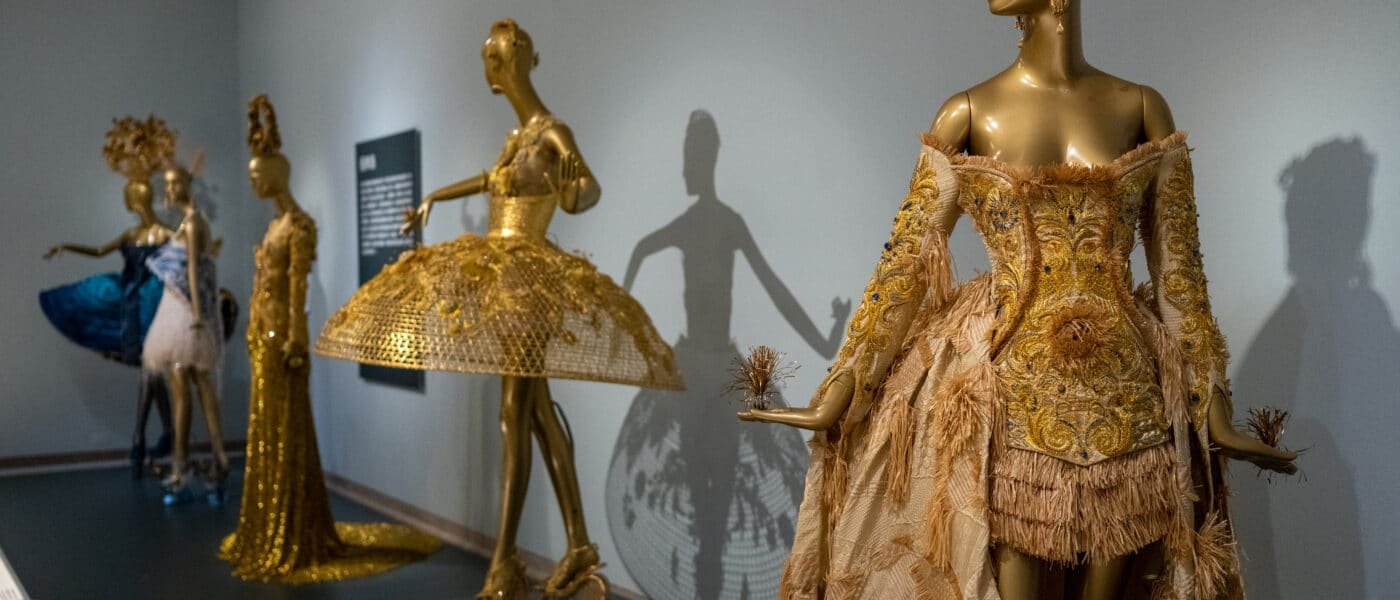Guo Pei: Couture Fantasy
Gold thread, Crystals, Embroidery, Flowers, Birds-nests, Monkeys, Dragons, Angels, and Demons
Prepare To Be Amazed
By Heide VanDoren Betz
“The traditional craftsmanship in my work provides a connection with history. It gives the work a much deeper legacy—a sense of inheritance of times past, and in carrying it forward. In the future, I hope that people will see it as a footprint of human memory.” Guo Pei
This stunning exhibition offers awe-inspiring gowns of Guo Pei’s more than 80 ensembles from the past two decades highlighting the designer’s most important fashion collections (shown on Beijing and Paris runways), including many designs that have never before been shown to the public. These are juxtaposed with works from the Fine Arts Museums of San Francisco’s art collections which make evident the art’s historical roots of the Sino-European object, a hybrid and popular form dating to the 17th century. Guo Pei continues to expand on this practice, amplifying the fusion of Chinese art with diverse traditions and styles through her fantastical design approach and global reach.
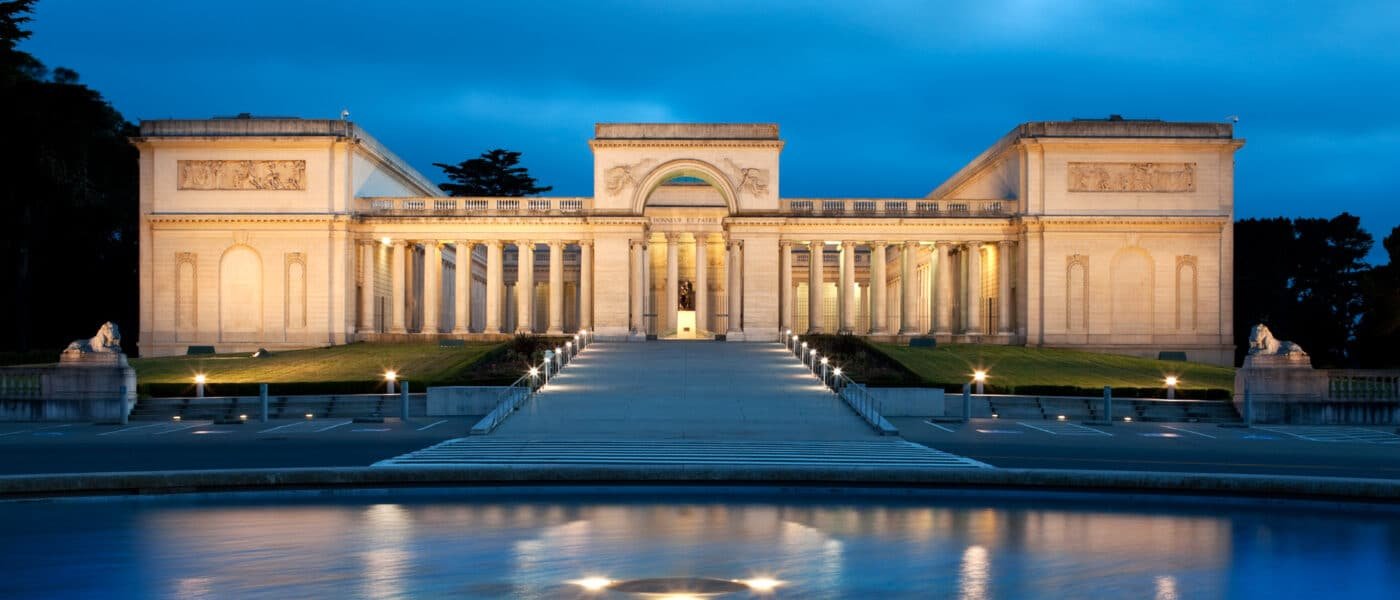
“Drawing inspiration from European and Chinese artistic traditions, Guo Pei’s creations blur the boundaries between art and fashion. Displayed in a neoclassical architectural context at the Legion Honor, amidst our collection of European art, Pei’s designs encourage our visitors to consider the rich historical ties between China and the West.” states Thomas P. Campbell, Director and CEO of the Fine Arts Museums of San Francisco: “San Francisco, with our position on the Pacific Rim and our significant Chinese heritage, is a natural location to premiere the first major museum exhibition on Guo Pei’s work and we are delighted to present her exquisite designs to US audiences.”
Couture Fantasy invites visitors on a journey into Guo Pei’s creative universe with designs displayed throughout the permanent collection and special exhibition galleries at the Legion of Honor, transforming the museum into a palace of couture.
“For Guo Pei, each collection starts with a philosophical idea—a spark of inspiration—drawn from a wide range of sources from her personal life and travels, as well as art and architecture, literature, and nature. Layers of meaning and imagery form a bricolage of opulent surfaces imposed upon sculptural silhouettes,” explains Jill D’Alessandro, Curator in Charge of Costume and Textile Art
The first gallery, the Rosekrans Court, provides a dramatic backdrop for the exploration of fantasy costume design in Chinese fashion. An Amazing Journey in a Childhood Dream was created when Guo was pregnant with her second child, envisioning it as the materialized dreams of a little girl, whose Barbie dolls come to life. These playful designs reveal an overlay of influences that define Guo’s artistic vision. The tightly pleated dresses, made from origami-like folds, reference Guo’s own childhood and the toys she made and played with during the Cultural Revolution. The pastel color palette derives from eighteenth-century French drawings, and the separates embroidered with raised metallic thread were inspired by matador costumes worn by Spanish bullfighters. This overlay of personal experiences and artistic influences is an instance of Guo Pei’s synthesizing multiple design traditions.
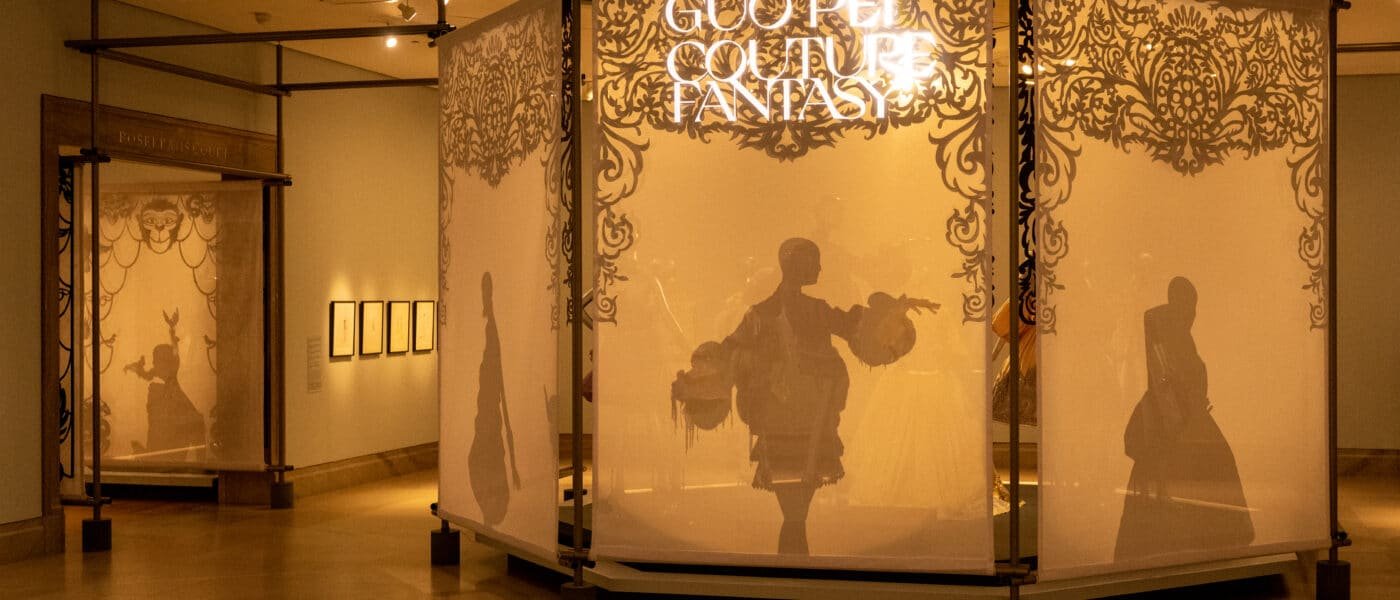
“Working to create something is like a religion to me. When a dress of mine is going down the catwalk, you would think I would be especially happy or excited, but no. At that moment I am actually very calm, and I don’t have the same sense of excitement that I do when I create. Instead, I have a little feeling of loss because, although the audience can see the result, I cannot display my creative process.” Guo Pei
Floral motifs, associated with traditional notions of femininity, have a long history in Chinese decorative arts and textiles and appear frequently in Guo Pei’s designs. The next gallery focuses on the botanical world through Garden of Soul. Guo Pei cites the Chinese saying: “One flower, one world; one leaf, one awakening” as the inspiration for Garden of Soul. She further explains: “I always find the power of nature fascinating, especially when the flowers are blossoming,” and she draws comparisons between the human soul and gardens and their mutual need to be nurtured. The garments’ structure and volume are achieved with multiple layers of silk, wrapped to evoke flower petals; the richly embellished surfaces illustrate a colorful array of floral motifs.
The symbolism :
Iris – an emblem of springtime
Lingzhi mushroom – a symbol of success, wellbeing, divine power, and longevity.
Pointed leaves of the sweet flag – magical qualities, an omen of good fortune and intelligence.
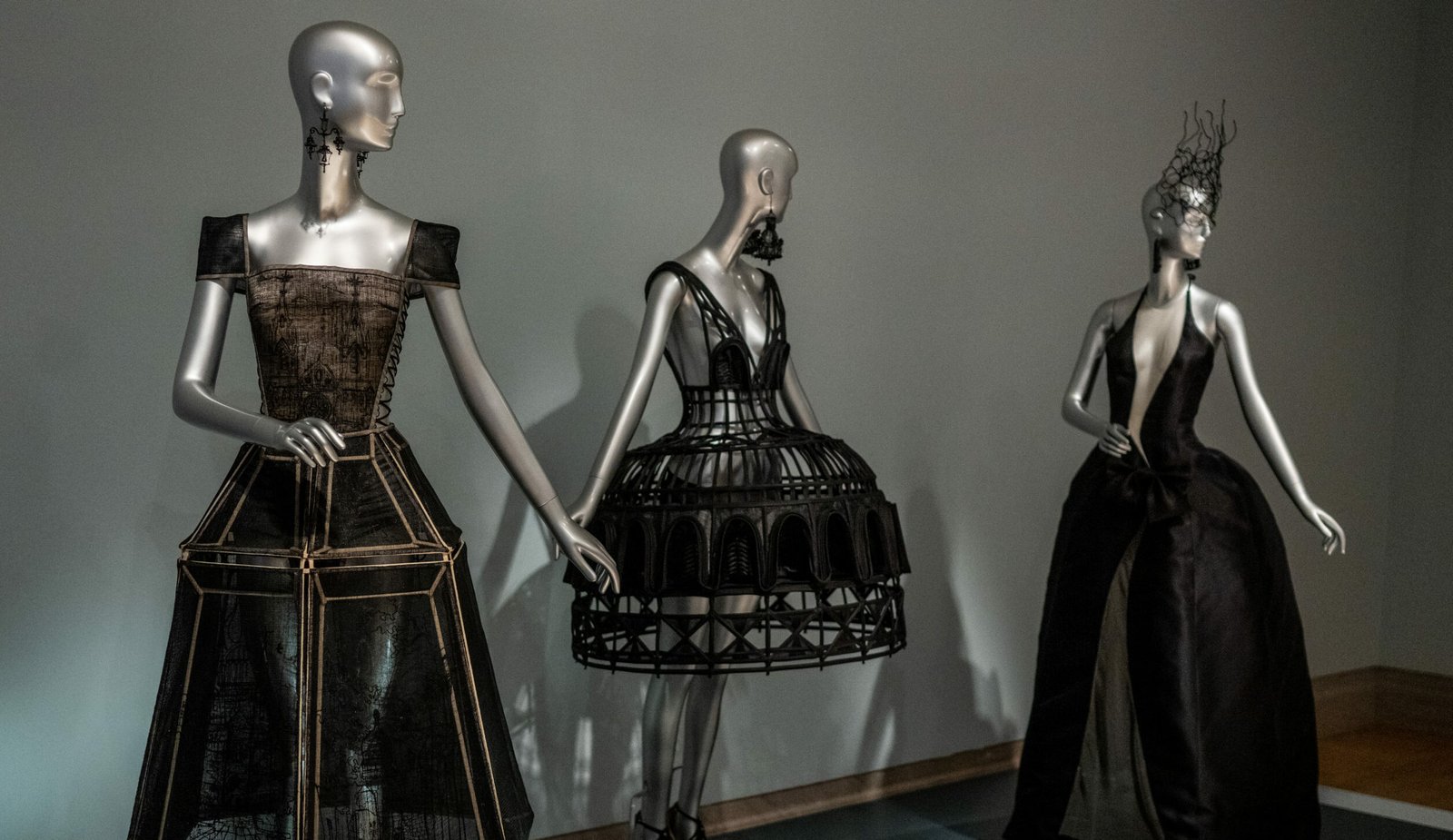
Elysium. In Greek mythology, Elysium represents a spiritual paradise, a land of perfect happiness and the place where the Gods obtain immortality. Guo Pei likens this idea to the concept of the pure land, or Western Paradise, in Mahayana Buddhism. Inspired by plants’ regenerative root structures, which she sees as an analogy for immortal life, the designer uses natural fibers such as bamboo and raffia, collaborating with expert bamboo artisans from Huangshan in Anhui, China. She remarks: “Roots are the source of life and vitality; without roots, there’s no life.” She further states: ” Elysium will free every soul to embrace beauty, understand the true meaning of life, and ultimately find the roots of one’s soul.”
In the following gallery, Legends stuns with garments first shown in Paris’ Conciergerie, the revolutionary prison where Marie Antoinette was detained before her execution. The collection was inspired by an eighteenth-century cathedral in Switzerland. The chapel’s beauty and history inspired Guo Pei to have fabric designed that would capture the sunlight streaming through the windows. Woven gold metallic and silk threads painted with images of the cathedral’s arched domes achieved this result. In Legends Guo Pei freely borrows from Catholic visual culture mixing the sacred with the profane. She says: “I have been really moved by Western architecture, culture, and history. I am curious. It is this curiosity that has mesmerized me…I want to know the stories of the West, like Westerners want to know about the East.”
The next gallery presents Guo Pei’s exploration of architectural elements in L’Architecture. Her garment’s construction reveals the influence architecture has on Guo Pei’s design principles – a relationship present throughout her career. Flying buttresses are translated into wide panniers of translucent fabrics and armatures are expressed through the wire and stiffened fabrics. She explains; “It is through architecture that mankind has relentlessly applied technologies to surpass themselves expressing their thoughts and imagination about space….in both fashion and architecture are many works that express the transcendent spiritual realm, a pursuit of the soul, of the spirit scape.”
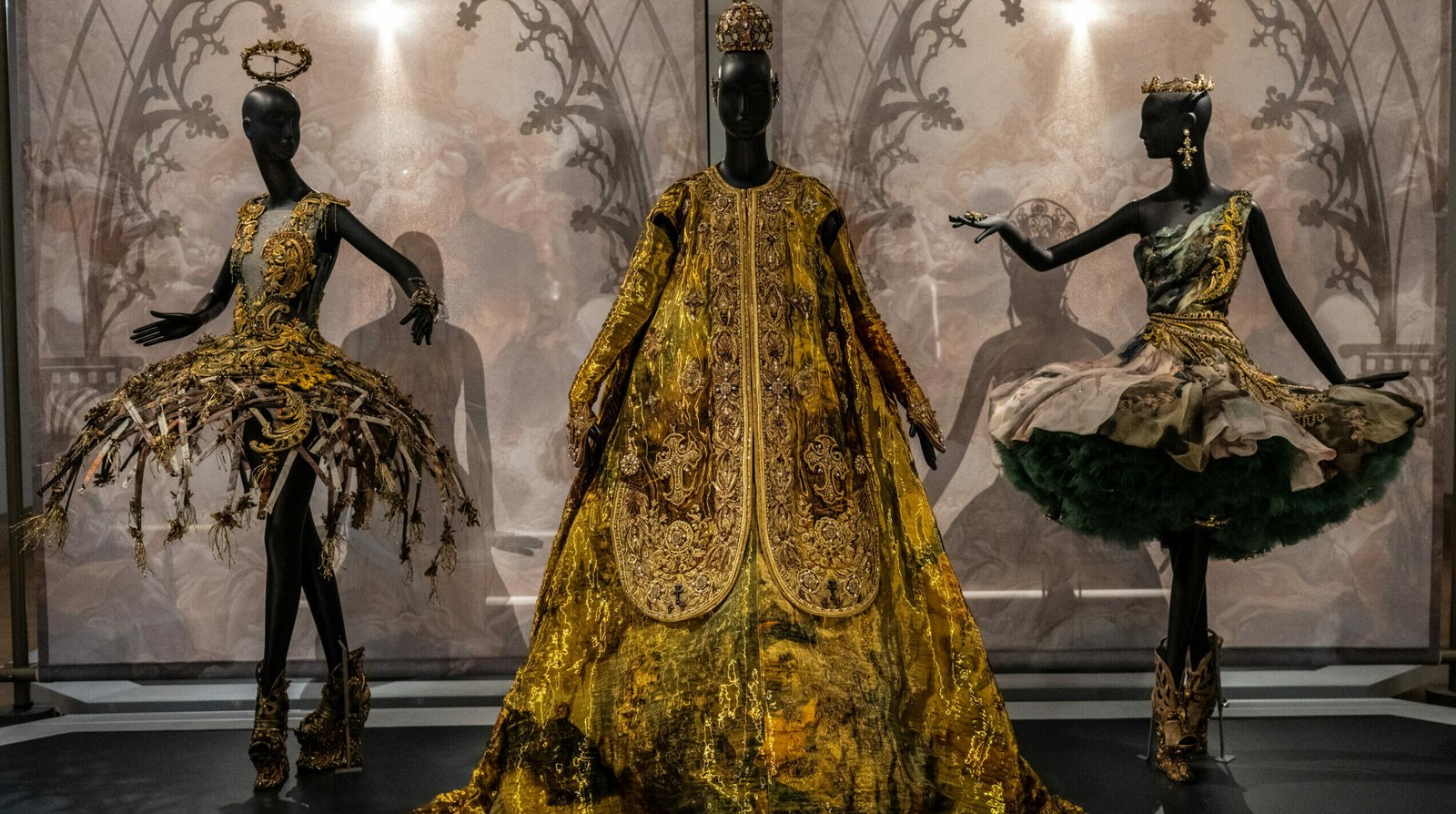
China’s imperial past and the country’s vast cultural history were the focus of the collection East Palace. For this runway show, presented at Palais de Tokyo in Paris, Guo Pei created a rendition of the Hall of Supreme Harmony in the Forbidden City. Inspired by Qing Dynasty court dress, Guo presented an overview of traditional Chinese dress and Chinese design elements, with elaborate three-dimensional pale gold embroidery of imperial dragons, birds, and flowers. For Guo Pei, the collection celebrated not only the women who donned the elaborate robes, but also the multitude of skilled needleworkers. She says: ” Since ancient times, court art has represented the highest standard, the imperial court was able to command the services of the best craftsmen. “
Guo Pei’s most recent collection is Himalaya (Spring/Summer 2020 Haute Couture). In its creation, Guo Pei was drawn to the Himalayas mountain range, as a holy place, the residence of the gods, and a sacred temple of the soul. She used her collection of rare obi belts from Japan, which she and her team transformed by turning them inside out and reassembling them to show the time and labor of the skilled weavers who created these exquisite textiles. Guo Pei states: “Haute couture is not made for commercial gain, but more for a kind of inner quest, a satisfaction of our spiritual being.”
The fantastical collection Alternate Universe serves as the exhibition finale. It is a Universe where, in the afterlife, animals preside over humanity. Guo Pei cautions her audience to respect animal life: “ Our soul might transmigrate or reincarnate between life forms, so if today we don’t care for a certain animal, in the next life we might become this animal, like a bird or a monkey.” Inspired by the ideas of afterlife and reincarnation, Guo Pei further expresses: “Since death is inevitable, I prefer to imagine it as a dream, an alternate universe parallel to this world, where everything returns to its original state of true pureness and beauty. It is the start of a mysterious journey.” The ensembles presented symbolize light and darkness coexisting, angels and demons next to one another, and magical creatures creeping out of the shadows. Her signature three-dimensional embroidery techniques conjure up an animal and insect motifs, from the monkeys of Aesop’s Fables to the snake that lured Eve to steal the forbidden fruit.
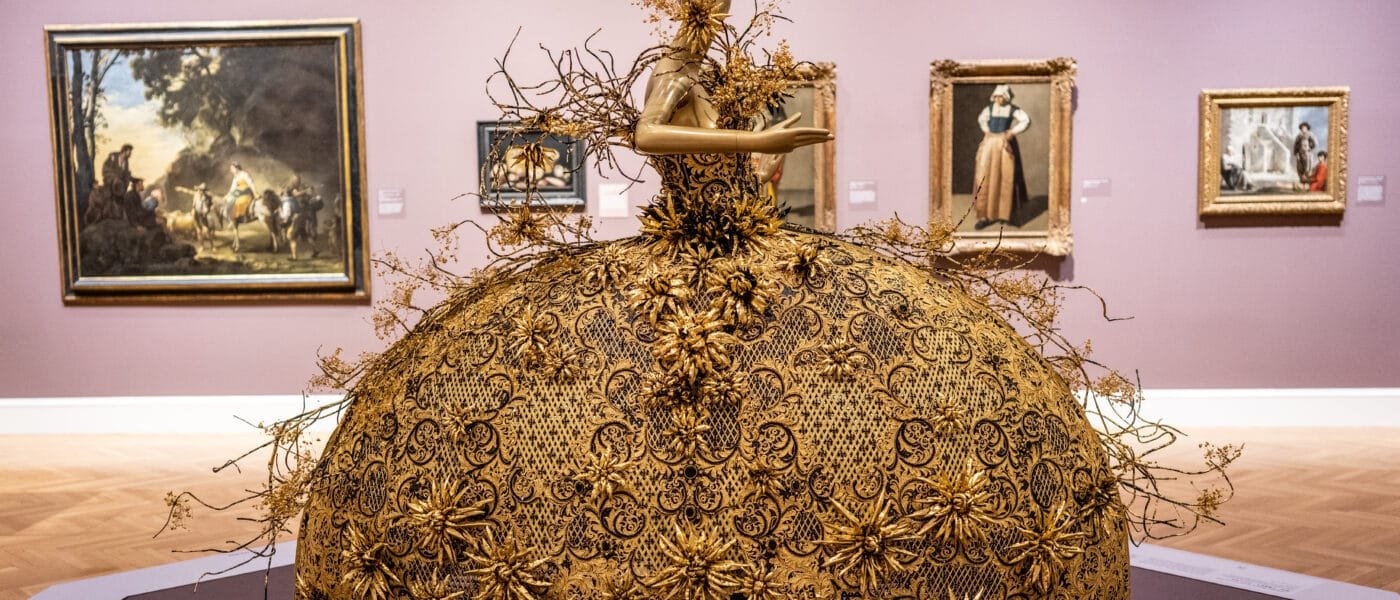
Guo Pei says: “As a creator and artist, there is no greater honor or privilege than to share my creativity with a wider audience. I am therefore honored and humbled that the prestigious Legion of Honor Museum is presenting a retrospective of my work. In doing so, I hope that it brings greater awareness and understanding of my life’s passion, and conveys Chinese culture, traditions and shows the new face of contemporary China,”
Guo Pei: Couture Fantasy is presented as part of the Fine Arts Museums of San Francisco Costume and Textile Arts global exhibition program, which highlights extraordinary artists and movements that have changed the course of fashion history.
Guo Pei: Couture Fantasy is organized by the Fine Arts Museums of San Francisco with significant support from the Asian Couture Federation.
Guo Pei: Couture Fantasy is curated by Jill D’Alessandro, Curator in Charge of Costume and Textile Arts at the Fine Arts Museums of San Francisco, in close collaboration with Guo Pei. BuYun Chen, Associate Professor of History and Asian Studies at Swarthmore College, and currently a fellow at Stanford Humanities Center, and Rachel Silberstein, Lecturer in the Jackson School of International Studies at the University of Washington serve as advising scholars for the exhibition.
An excellent catalog, Guo Pei Couture Fantasy accompanies the exhibition, with the Forward by Thomas Campbell and essays by Jill D’Alessandro, Juanjuan Wu, Sally Yu Leung, Anna Grasskamp
Published by The Fine Arts Museums of San Francisco with Yale University Press.

